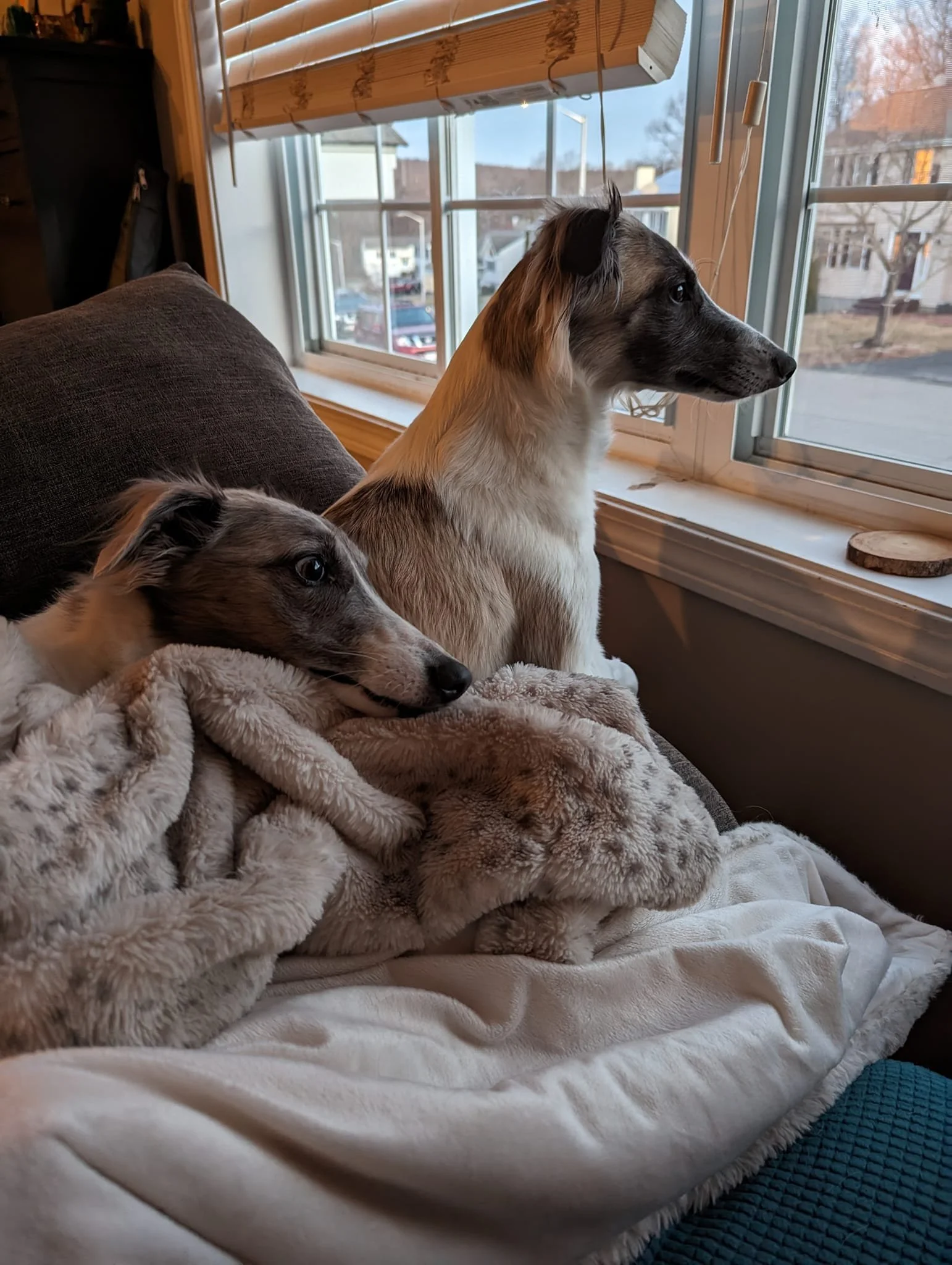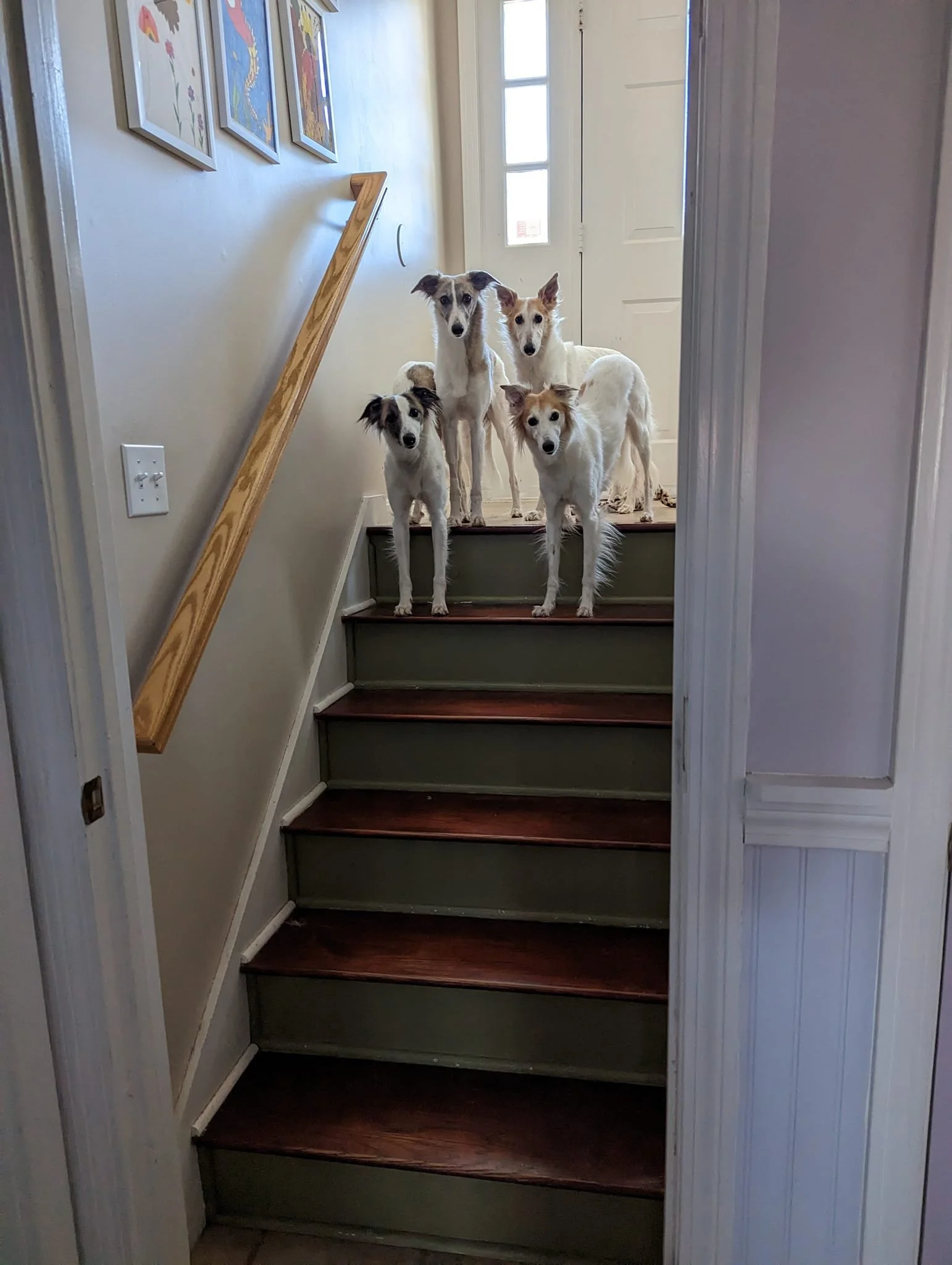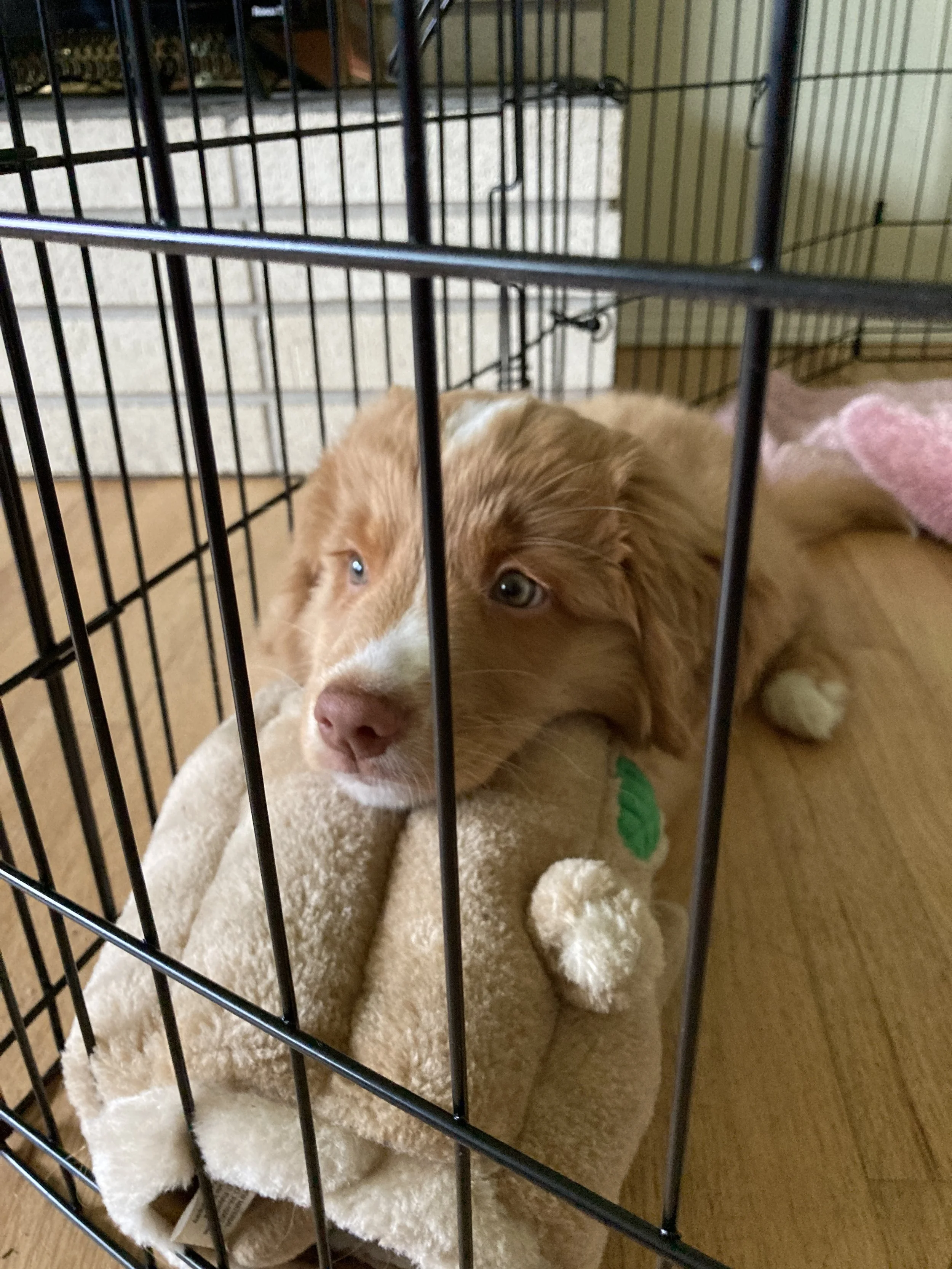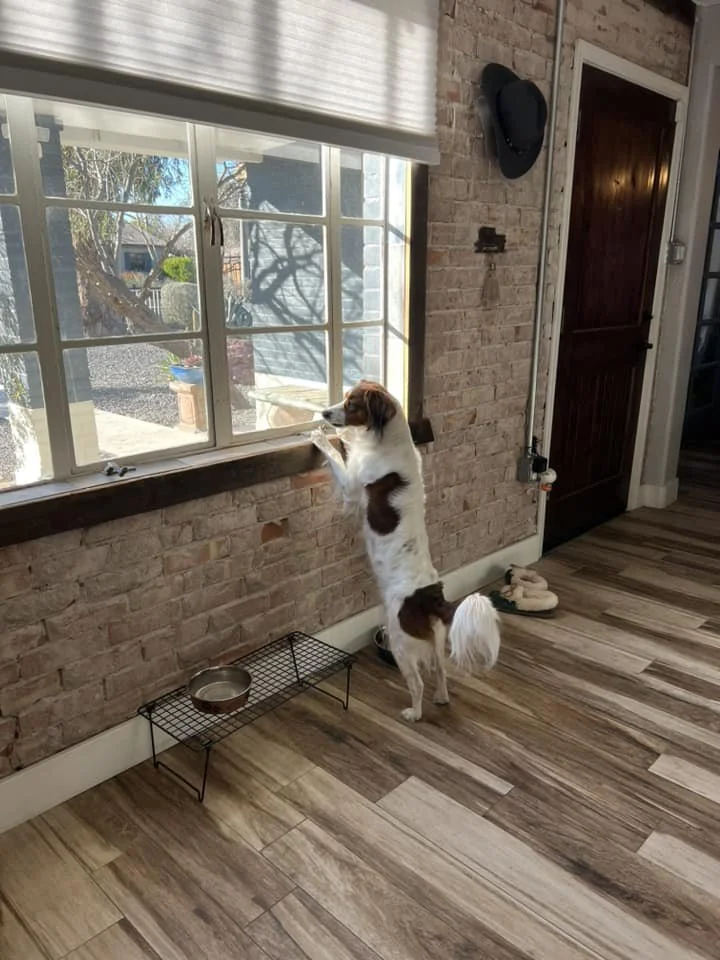Identifying Dog Separation Anxiety (And What to Do About It)
Separation anxiety is a loaded term that’s often applied to any dog who seems stressed when left alone. The good news is that true separation anxiety, while severe, is not as common as people think. Here’s how to identify dog separation anxiety vs. other common issues (and what to do if your dog hates being left alone).
If you’re like most people, then you probably wish you could take your dog everywhere you go. Sadly, we live in the real world and have to leave our dogs home a lot of the time when going to work and school or running errands.
Dogs usually don’t enjoy being left alone, but some dogs can tolerate it better than others. When dogs show any distress at being left alone, it’s common for people to conclude that they must have “separation anxiety.”
Truthfully, though, legitimate separation anxiety isn’t all that common (thank goodness). It’s a severe behavioral disorder that seems to have a genetic link. Dogs with separation anxiety panic when they are left alone.
If you’re concerned that your dog might have separation anxiety, it’s important to look at the whole picture before jumping to any conclusions. Here’s what you need to know about what separation anxiety in dogs is (and isn’t), plus what to do if your dog becomes distressed when you leave them by themselves.
What is Separation Anxiety?
Separation anxiety is a serious behavioral disorder that causes dogs to experience severe distress when left alone–and also in anticipation of being left alone. Dogs with separation anxiety essentially have panic attacks when they are left by themselves. They are not making conscious decisions about their behavior and might exhibit one or more of the following symptoms of distress:
Escape attempts
Distress vocalizing (barking, howling, crying)
Pacing
Panting
Destructiveness (typically in their attempts to escape or get better visibility)
House soiling
The problem with these symptoms is that they don’t automatically mean that a dog has separation anxiety. It’s the degree of distress (and the cause of the symptoms) that distinguishes separation anxiety from other issues that might occur when someone leaves their dog alone.
What’s NOT Separation Anxiety
Many people think that behavior such as destructiveness alone is a sign of separation anxiety. But If your dog rips up the couch cushions when you’re away or chews on your shoes, that doesn’t automatically mean they’re experiencing separation anxiety when you’re gone. The same goes for soiling the house and barking.
While these can be signs of dog separation anxiety, other causes are actually more likely. Dogs can exhibit what we consider bad behavior when left alone for a variety of reasons. Here are some of the most common reasons dogs exhibit distress or inappropriate behavior when we leave.
Boredom
Some dogs simply get bored when they’re left unsupervised. Instead of napping, they spend their time barking and/or destroying their human’s possessions. This is annoying and expensive at best and dangerous at worst. A dog with separation anxiety might desperately scratch up or chew door frames and blinds in their attempts to escape, while a dog that is simply bored is more likely to chew up any convenient or tempting items around them.
The fixes for this can include better meeting the dog’s needs before leaving and setting up the environment to prevent destructive behavior. A dog that has had adequate exercise, social outlets, and enrichment is less likely to choose destructive behavior when left alone. Additionally, leaving the dog in a crate, pen, or dog-proofed area of the home can be used to prevent further destructiveness.
Fear of Missing Out (FOMO)
Dogs, especially young dogs, want to be in the middle of things most of the time. They hate missing out on the fun! This can mean that they bark, pace, and have trouble settling when their people leave.
FOMO is something that tends to get better over time with practice and maturity. Dogs eventually learn that being alone is boring but ultimately not a big deal. However, it can be a problem for apartment-dwellers or in other situations when noise is an issue.
Hyperattachment
Hyperattachment is different from separation anxiety in that dogs who are hyperattached to their owners typically don’t have any issues being left alone at home–they only become upset when they know their person is nearby and they cannot access them. This is typically a lot easier to deal with than separation anxiety and is usually less severe.
Confinement Anxiety
Some dogs have no problems being left alone–but they have a big problem with being confined. These dogs become upset when they’re left in a crate or pen and may make desperate attempts to escape, vocalize, and pant. This problem is usually easy to solve as these dogs frequently do well when they’re given a larger space, such as a dog-proofed room, for when their people are away.
Age-Related Issues
A lot of people worry about separation anxiety in puppies. However, it’s important to remember that puppies are literal babies. They’ve also recently left their mother and littermates, and they might be feeling lonely or insecure.
It’s pretty common for puppies to have feelings about being left alone. As they grow, they will become more independent, especially with practice. Over time, most puppies will happily lick away at a frozen treat by themselves for a while and eventually grow into adults who can be left alone with no problems.
In short–don’t jump to the conclusion that your puppy has separation anxiety. They need time to grow up and mature!
Assessing Your Dog’s Separation Behavior
Just because your dog was naughty when they were home alone doesn’t mean they have separation anxiety. The only way to find out if they are panicking when you leave is to observe them remotely.
The easiest way to do this is with a camera that can record sound. Set it up and experiment with leaving your dog home alone under various conditions. If a camera isn’t in the budget, you can always set up an older device and call yourself on Google Meet or Zoom with the sound and camera turned off on your side. Bottom line: you need to be able to see your dog without them knowing that you’re watching.
For this method of assessment to work, you need to actually leave the property. If you just go into the backyard, your dog will know. You need to get far enough away that they know you are gone. At that point, you can collect accurate data and see if your dog shows signs of distress, boredom, or anxiety.
If they display signs of distress or anxiety, the next step is to create a plan, whether that means working with a behavior consultant or behaviorist and vet, changing your setup, or working on building up your dog’s tolerance for being left alone.
What to Do if You See Signs of Dog Separation Anxiety
If you notice signs of FOMO, boredom, or confinement anxiety, there are relatively simple ways to approach the problem, such as changing the setup when you leave. Some dogs also just need more practice and maturity before they are able to be trusted loose in the home when they are alone.
However, if you see that your dog is experiencing real panic when you leave (and in anticipation of when you leave), your next step should probably be to consult with a professional, such as a veterinary behaviorist or behavior consultant. Remember that separation anxiety is not a training issue, and most trainers will be unable to help you manage the issue effectively.
A professional who is trained in dog behavior will be able to recommend a protocol for your departures, which can include creating solid routines that help your dog feel less panicky as you prepare to leave. In many cases, a behavior professional might suggest calming aids or medication to help ease the symptoms of separation anxiety so that your dog doesn’t experience as much distress when you’re gone.
Dealing with separation anxiety in dogs can be a challenging and emotional experience. Getting support from knowledgeable and empathetic professionals can help you feel better about your management strategies and treatment plan. It’s important to note, however, that although you can make the issue more manageable, it’s usually not realistic to “cure” a dog of their separation anxiety.
Dog Separation Anxiety is Not Your Fault
Many people worry that they have “caused” their dog’s separation anxiety by not leaving them alone often enough. This is a myth. It seems that some dogs have a genetic predisposition to separation anxiety that is likely to pop up regardless of training and practice.
If your dog has separation anxiety, know that it is NOT your fault. There is no reason to feel guilt or shame about your dog’s fears. Do what you can to help them feel safer and more comfortable when you’re gone, but don’t buy into the myth that you’re at fault.
Also? It’s okay to be excited and greet your dog when you get home. If your dog has been experiencing distress when you’re away, comfort them! It is NOT causing the problem. A dog in distress needs comfort!
For help with separation anxiety, check out the American College of Veterinary Behaviorists (ACVB)’s directory to find a qualified professional near you. Just need tips on dealing with problems like FOMO, hyperattachment, and other common concerns? Join the SuperPup Patreon to access bimonthly study halls, Facebook group access, and private coaching. Our instructors can help you develop a plan that’s tailored to you and your dog’s needs.




